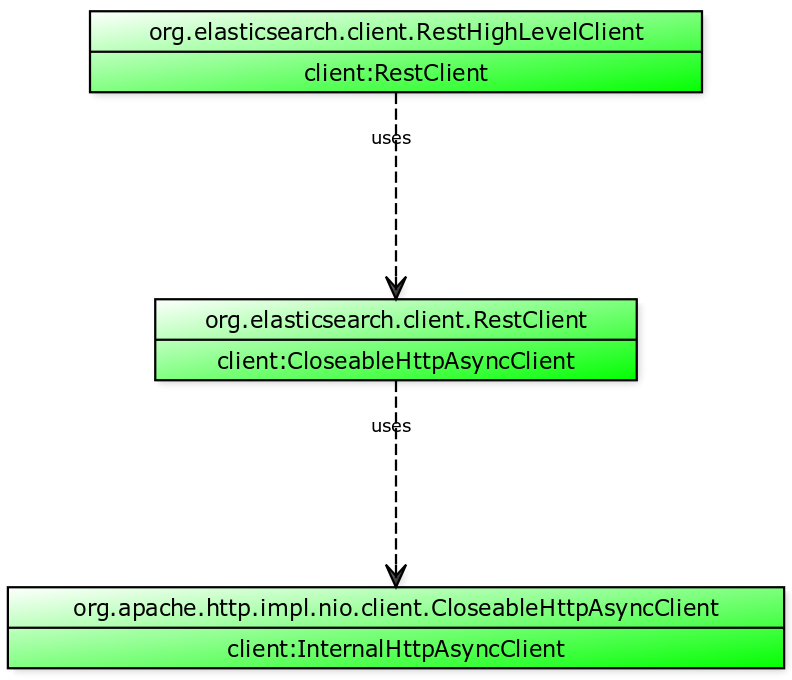


- #Apache async http client how to
- #Apache async http client full
- #Apache async http client code
- #Apache async http client download
You can simply block the calling thread to get the response. Builder clientBuilder Dsl. Use the addBodyPart method to add a multipart part to the request.ĭealing with Responses Blocking on the FutureĮxecute methods return a . If we need a custom configuration of the HTTP client, we can build the AsyncHttpClient object using the builder DefaultAsyncHttpClientConfig.Builder: DefaultAsyncHttpClientConfig. Have a look at FeedableBodyGenerator if you're looking for a way to pass requests chunks on the fly. Transparent connections through HTTP proxies. Supports encryption with HTTPS (HTTP over SSL) protocol.
#Apache async http client full
The component uses the AHC component that in turn uses the Async Http Client library. HttpAsyncClient HttpAsyncClient Cache Features Standards based, pure Java, implementation of HTTP versions 1.0 and 1.1 Full implementation of all HTTP methods (GET, POST, PUT, DELETE, HEAD, OPTIONS, and TRACE) in an extensible OO framework. The AHC-WS component provides Websocket based endpoints for a client communicating with external servers over Websocket (as a client opening a websocket connection to an external server). .generator.BodyGeneratorīodyGenerator is a generic abstraction that let you create request bodies on the fly. Both producer and consumer are supported.Use the setBody method to add a body to the request. executeRequest(request) Setting Request Body build() įuture whenResponse = asyncHttpClient. Shouldn't you pass the "polar" keyword in subplot_kw ? See here : Īs for the error in itself, nor subplots nor figure have a "polar" argument, that's what the error message is telling you (you can see in the link above that extra keyword arguments passed to pyplot.subplots get passed to the pyplot.figure call).// bound Future whenResponse = asyncHttpClient.
#Apache async http client code
The code fragment below illustrates the most fundamental aspects of asynchronous. CloseableHttpClient httpclient HttpClients. Using this method, create an HttpClient object as shown below. HttpAsyncClient 4.1 requires Java 1.6 or newer. The createDefault () method of the HttpClients class returns a CloseableHttpClient object, which is the base implementation of the HttpClient interface.
#Apache async http client download
I guess the formatting on that line is not correct or maybe I should do it differently. Download ‘Binary’ package of the latest HttpAsyncClient 4.1 release or configure dependency on HttpAsyncClient module using a dependency manager of your choice as described here. Notice if bridgeEndpointtrue then the cookie store is forced to be a noop cookie store as cookie shouldn’t be stored as we are just bridging (eg acting as a proxy). In line fig1, self.ax = plt.subplots(111, polar=True, dpi=100) By default the .client.BasicCookieStore is used which is an in-memory only cookie store. Self.ax.fill(angles, values2, 'red', alpha=0.1)ĪttributeError: 'Figure' object has no property 'polar' Self.ax.fill(angles, values1, 'teal', alpha=0.1) Asynchronous HTTP clients have their own thread pool to handle the response once it arrives. You can see here all the above scenarios but using the Asynchronous HTTP Client.
#Apache async http client how to
This example demonstrates how to avoid the illegal reflective access. This example demonstrates an asynchronous HTTP request / response exchange with a full content streaming. Response content is buffered in memory for simplicity. Tmp_df = tmp_df.set_index(column_index_name) A possible solution to all these timeouts juggling is to use Asynchronous HTTP Client, which is based on Netty. HttpClient Examples (Async) This example demonstrates a basic asynchronous HTTP request / response exchange. Self._data = pd.concat(, axis=0)Īngles = Ĭolumn_index_name = self._lumns Self.principal_layout.addWidget(self.spyder_chart)įig1, self.ax = plt.subplots(111, polar=True, dpi=100) Self.principal_layout = QVBoxLayout(self) Here is my class(widget in a widget): # IMPORT PYSIDE CORE I'm having troubles to plot a spyder graph, I'm making it on pyside with matplotlib


 0 kommentar(er)
0 kommentar(er)
